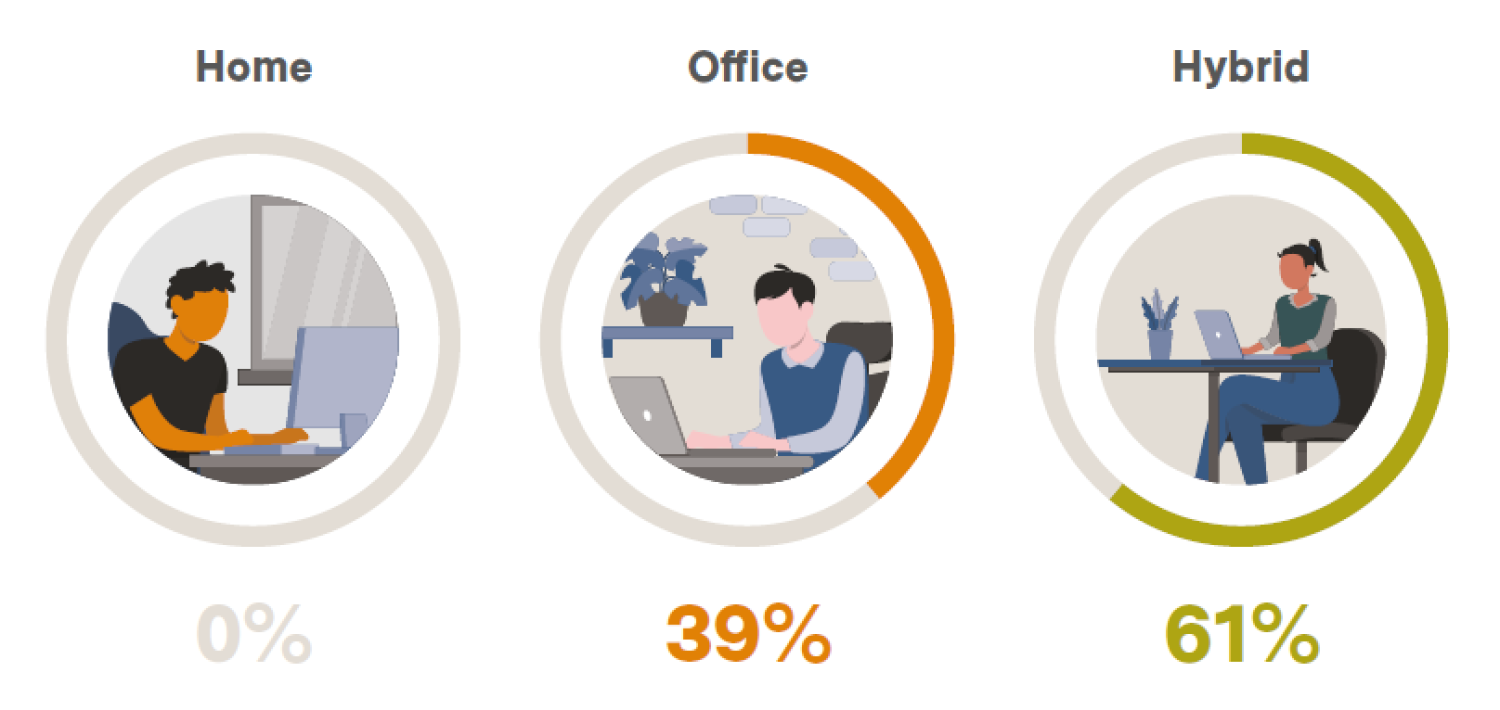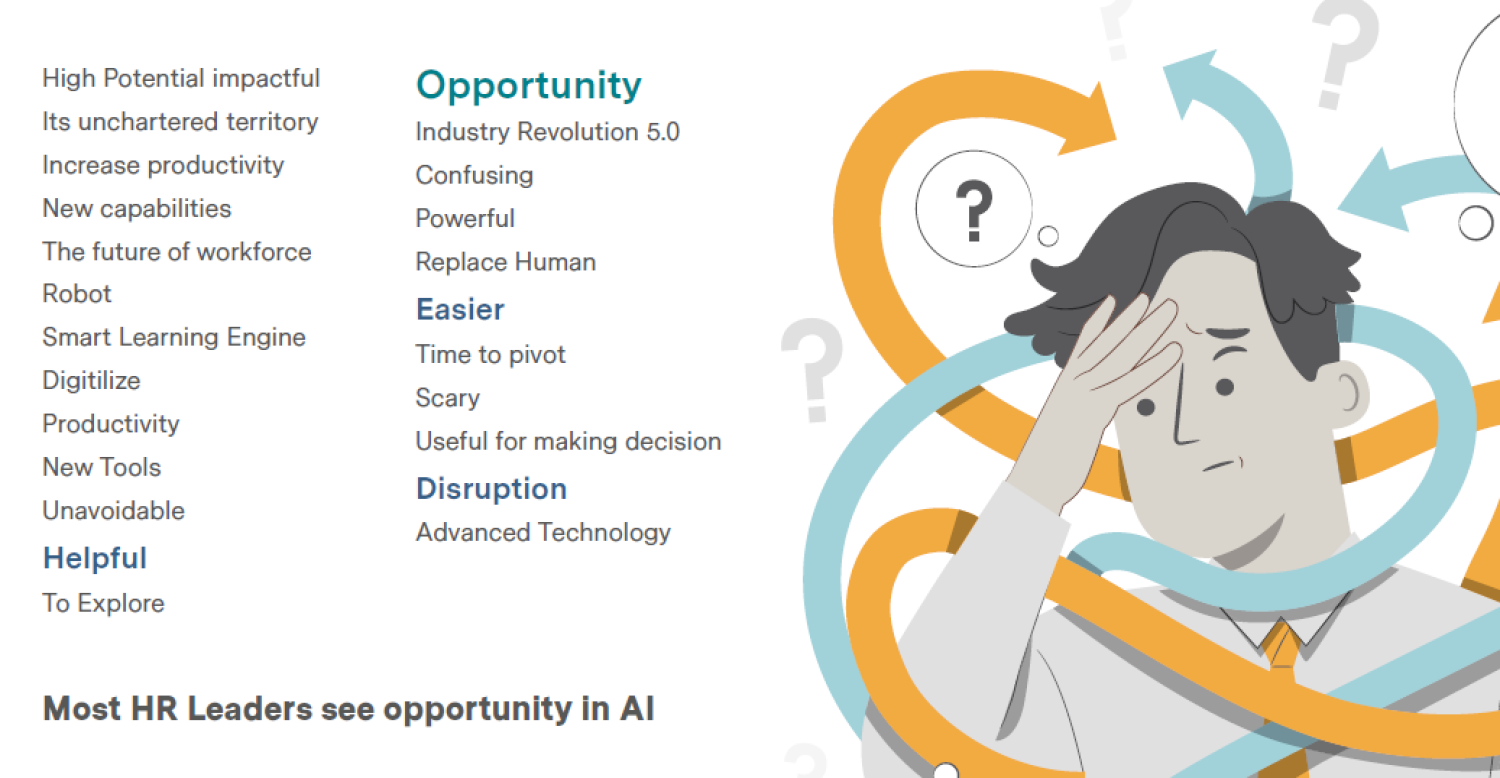Egon Zehnder recently gathered Human Resources Leaders from Indonesia’s top companies for an open and insightful dialogue on the trends that are shaping the future of work in an ever-evolving landscape.
HR leaders from companies in digital services, financial institutions, telco, retail, among other sectors, shared perspectives, exchanged experiences, and collectively explored strategies that will steer HR practices into the future. Workplace trends discussed by these leaders – from technology adoption and remote work adaptation to talent acquisition and retention strategies – have the transformative potential to redefine how organizations operate in the evolving landscape of work.
Without a question, the shift to remote and hybrid models, which is deeply related to employee engagement and productivity, remains top of mind and key subject of discussion for our attendees. It’s no understatement to say that the COVID-19 pandemic completely upended how and where people do their work, and many organizations are still following a remote work policy.
What It Takes to Have a Successful Hybrid Work Policy
Navigating the dynamic landscape of hybrid work, trust emerges as a cornerstone, as encapsulated by one leader’s insight:
There is a lot of trust in [Hybrid Working], and this goes back to a very honest conversation with the leaders on intent.
An HR leader from one of the financial technology companies in Southeast Asia

This underscores the critical role of transparent communication and understanding between leaders and employees, permeating diverse aspects, from flexible policies acknowledging individual responsibility to proactive measures like coaching managers for effective collaboration in the evolving work environment.
Even retail companies are embracing hybrid models, as revealed in our discussion with HR leaders. However, for sectors with a prevalence of frontline workers, such as banking branch offices, in-person work is favored to minimize gaps between senior leaders and frontline staff. A pervasive sentiment is that trust, coaching, and mentoring managers on setting expectations are pivotal for success. Attendees also emphasized practical considerations, like developing tools for tracking in-office presence and expanding meeting room capacity for video calls.
Amid ongoing discourse on hybrid work, however, some leaders lean towards a full-time return to the office for all employees. A potential compromise to that, as one HR leader highlighted, is the adoption of “hubs,” providing satellite locations closer to home—a move aligned with reducing commuting time and supporting ESG objectives by minimizing the carbon footprint.
How Technology Can Spur Efficiencies for HR Leaders
As the world of work undergoes a transformative shift towards hybrid work arrangements, the role of technology also becomes increasingly critical. In this context, the impact of artificial intelligence (AI) on HR processes takes center stage. As such, HR leaders are not only navigating the complexities of managing a workforce with diverse location preferences, but they are also exploring how to harness the power of AI in HR operations. Simultaneously, HR leaders must proactively manage the organizational impact of AI adoption, including initiatives such as workforce reskilling.

Participants described how they were using AI to create tools in areas such as performance management, decision-making, and customer services. One leader, from one of Indonesia’s largest digital services companies, detailed how their organization was now using AI to respond to customer complaints, rather than human agents. But HR leaders also sounded a note of caution on the new technology. Specifically, one participant said AI should be used to create models to help the person make a decision, rather than depending on AI to make decisions for them. In that vein, he advocates not to force AI into every potential use case – “It’s not something that we have to adopt just for the sake of adopting it.”
As organizations harness AI to optimize HR functions, the discussion naturally extends to the area of talent acquisition and retention strategy. A central question integral to any HR strategy revolves around the trade-off between buying external talent or building internal talent. Participants weighed the pros and cons of each approach.
Effective talent development involves fostering engagement, loyalty, and patience, requiring substantial investment in internal employees, as highlighted by one leader. Another participant emphasized that building talent is a valuable strategy, enabling younger or less experienced individuals to gain exposure across different areas, fostering mobility and creating a cohesive and nurturing company culture, akin to a family business. Having clarity of business needs is key.
We talked about buy or build, but we can also borrow talents…
An HR leader from one of the leading family-owned company in Indonesia

“… Depending on the industry, business size and cases, we need to have understanding on what we want, in order to decide on buy, build or even borrow talent. In the long run as family business, we also must think about longevity – where we would like to have 4 generations in 1 organization - 20’s, 40’s, 60’s, 80’s”, explained by the HR Leader.
However, acknowledging the immediate needs of specific high-level skill sets, an HR leader advocated for the occasional necessity to “buy” talent, providing a swift solution to pressing challenges and facilitating rapid growth. The consensus among participants was that both building and buying talent are valid strategies, each serving distinct purposes—building for long-term health and sustainability and buying for immediate problem-solving and growth acceleration.
Shaping the Future of Work in Indonesia
Reflecting upon the productive discussion, HR leaders are adapting to evolving paradigms and are in a strategic position to influence and shape the future of work – which will impact not only their organization, but also the larger community.





